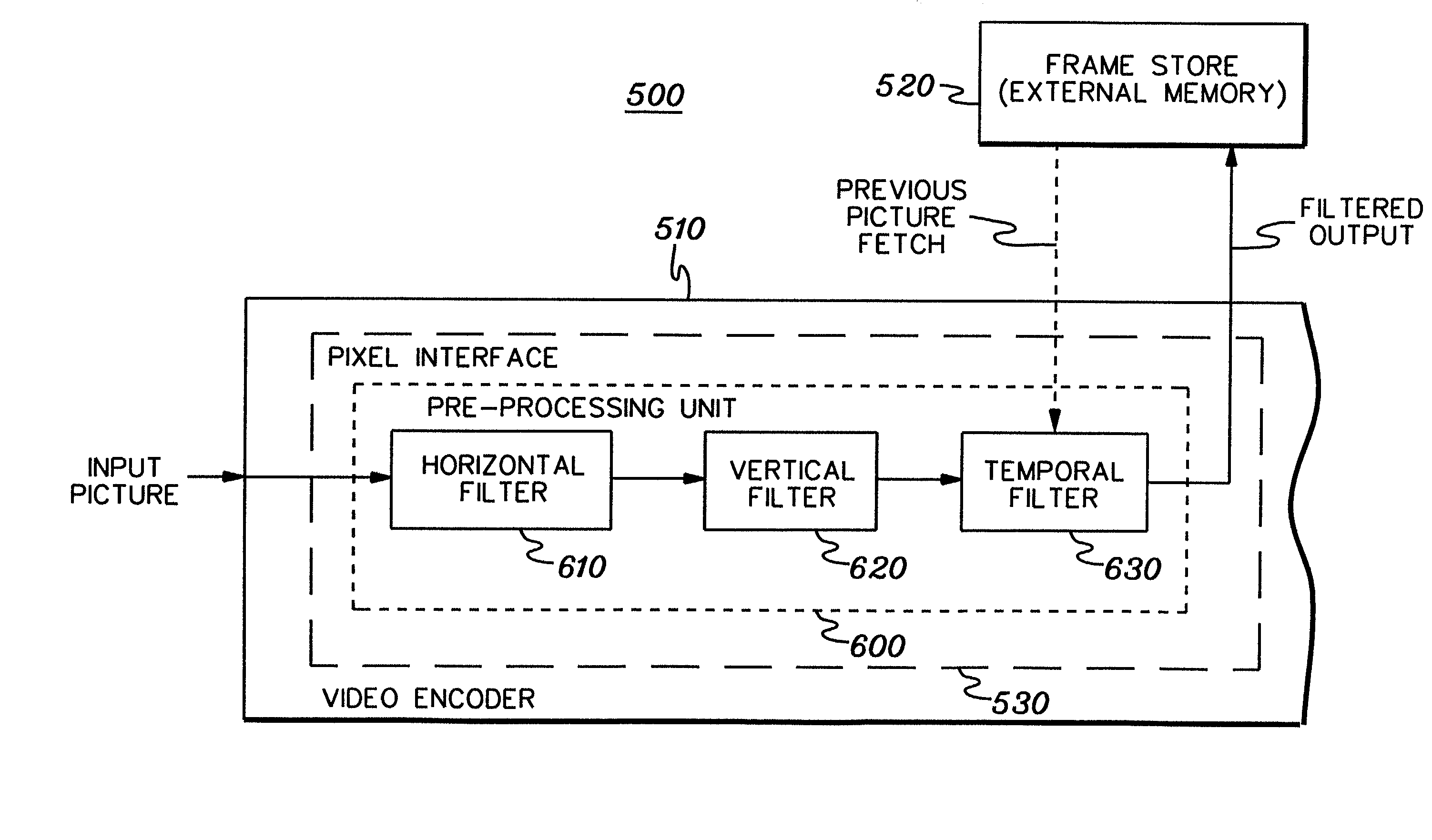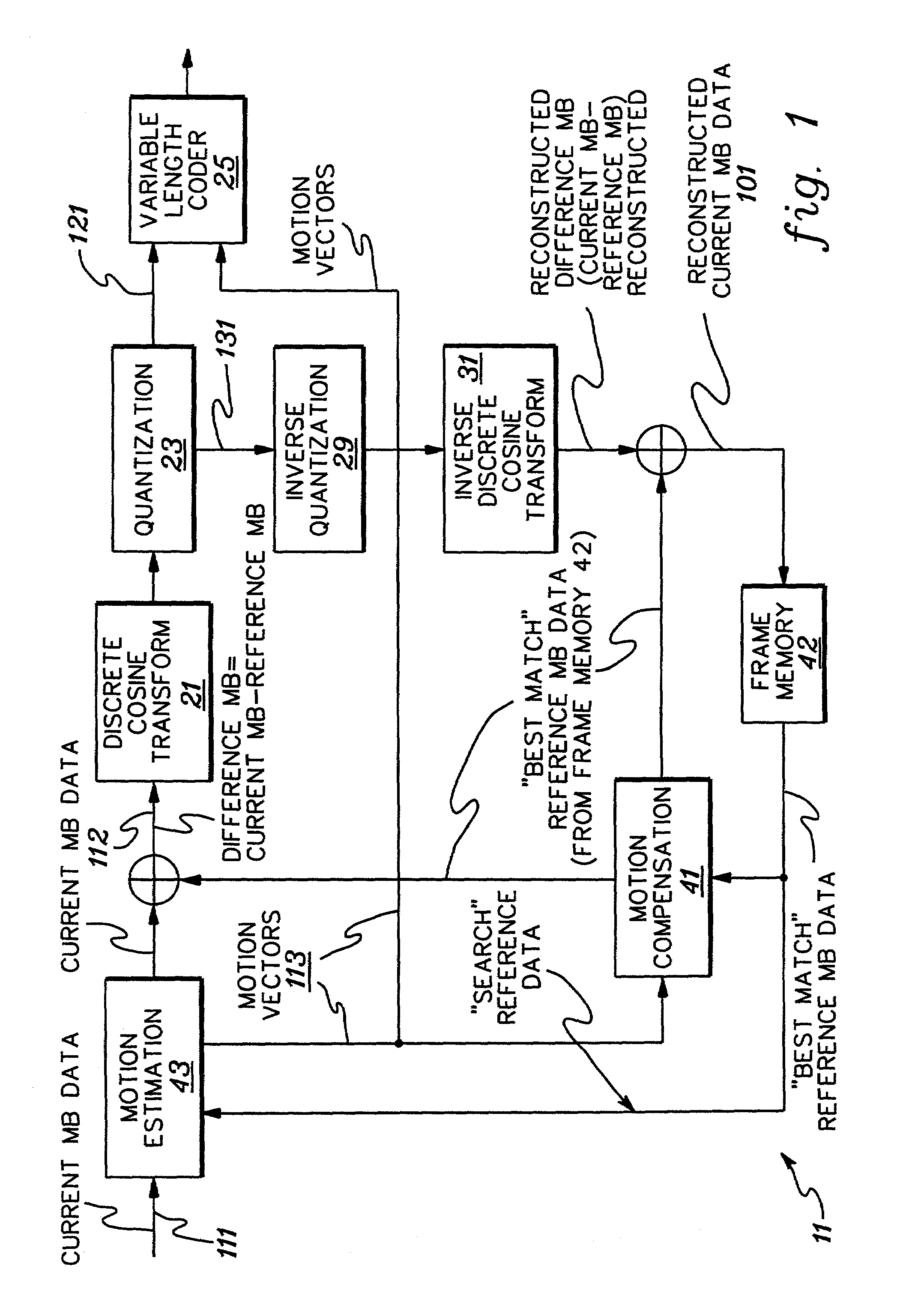Programmable horizontal filter with noise reduction and image scaling for video encoding system
a video encoder and image scaling technology, applied in the field of digital visual image compression, can solve the problems of low bit rate, more difficult compression, and difficulty for an encoder to perform optimal compression, and achieve the lowest possible compressed output bit rate, eliminate or substantially reduce any inherent noise
- Summary
- Abstract
- Description
- Claims
- Application Information
AI Technical Summary
Benefits of technology
Problems solved by technology
Method used
Image
Examples
Embodiment Construction
[0037]The invention relates, for example, to MPEG compliant encoders and encoding processes such as described in “Information Technology-Generic coding of moving pictures and associated audio information: Video,” Recommendation ITU-T H.262, ISO / IEC 13818-2, International Standard, 1996. The encoding functions performed by the encoder include data input, spatial compression, motion estimation, macroblock type generation, data reconstruction, entropy coding, and data output. Spatial compression includes discrete cosine transformation (DCT), quantization, and entropy encoding. Temporal compression includes intensive reconstructive processing, such as inverse discrete cosine transformation, inverse quantization, and motion compensation. Motion estimation and compensation are used for temporal compression functions. Spatial and temporal compression are repetitive functions with high computational requirements.
[0038]More particularly the invention relates, for example, to a process for pe...
PUM
 Login to View More
Login to View More Abstract
Description
Claims
Application Information
 Login to View More
Login to View More - R&D
- Intellectual Property
- Life Sciences
- Materials
- Tech Scout
- Unparalleled Data Quality
- Higher Quality Content
- 60% Fewer Hallucinations
Browse by: Latest US Patents, China's latest patents, Technical Efficacy Thesaurus, Application Domain, Technology Topic, Popular Technical Reports.
© 2025 PatSnap. All rights reserved.Legal|Privacy policy|Modern Slavery Act Transparency Statement|Sitemap|About US| Contact US: help@patsnap.com



